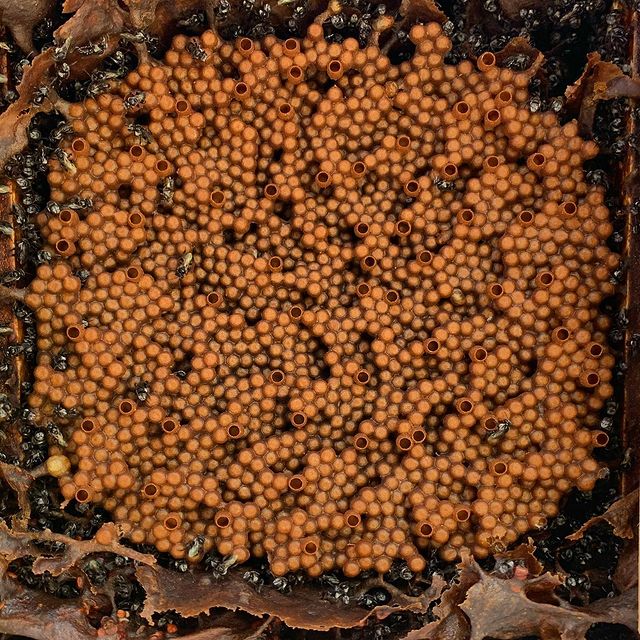Tetragonula Hockingsi, also known as the sugarbag bee or simply TH, is a small stingless bee species that is native to Australia. These bees are found in tropical regions, particularly in the northern parts of Australia, where they play an important role in pollinating various plants and crops.
About Hockingsi
Tetragonula Hockingsi is relatively small, measuring only about 4.5mm in length, and is black in colour. They are commonly found in colonies, which can range in size from a few hundred bees to several thousand. Unlike some other bee species, such as honeybees, sugarbag bees do not have a stinger and are considered harmless to humans. The bees can bite but this is very small and almost painless. Traditionally Hockingsi are a little bit more aggressive than Tetragonula Carbonaria.

Distribution and Habitat
The natural distribution for Tetragonula Hockingsi is tropical and Queensland only. Ranging from the Gold Coast all the way up to Cape York.
One of the most interesting characteristics of Tetragonula Hockingsi is their way of storing honey and pollen in resinous pots, which are made from a mixture of beeswax and plant resin. This mixture is called propolis. These pots are commonly known as “sugar bags,” which is where the bee gets its common name. Sugarbag honey has a unique flavour that is different from other types of honey and is highly valued by Indigenous Australians for its medicinal properties.
The nests are made of the same mixture of beeswax and plant resin propolis. The bees use these nests to store honey and pollen and to rear their young. The average size of the nest is approximately 10L in volume.
Tetragonula Hockingsi can use a man-made hive called an “OATH”, Original Australian Trigona Hive. Using these hives, we can manage the hive effectively. We can propagate more hives via splitting or budding, turning one hive into two. We can also extract valuable sugarbag honey.
Predators and Defence
The most common natural enemies of Hockingsi are Syrphid Fly, Phorid Fly and Hive Beatle.
Syrphid Fly will lay its eggs in any gaps of a hive. The eggs will hatch and try to gain access to the hive via the cracks or gaps. This is why we need to ensure that any gaps in a hive are covered.
Phorid Fly will attack a hive via speed through the entrance. Phorid Fly is smaller and faster than stingless bees. If the hive has limited guard bees or no protective entrance tube Phorid fly can speed past any protections.
Other predators include Bembix Wasps, Assassin Bugs, Spiders and Geckos but these and only minor and can only kill one or two bees at a time.
Tetragonula Hockingsi will defend a hive using a long entrance tube inside the hive filled with guard bees to keep any enemies out. Entry and exit holes are kept to a minimum, often just one and are small in size, 8 – 12mm. If predators do make it inside the hive, Hockingsi can dab the invader with wax until it becomes entombed as a last resort. Defence or fighting swarms can occur when a bee from another unknown nest tries to enter a hive. The defending hive will send thousands of works out in a show of force. The result can be hundreds of dead bees.
Pollination
Sugarbag bees are important pollinators of various plant species, including fruit trees, vegetables, and herbs.
Why Have Stingless Bees?
Like many other bee species, sugarbag bees are facing threats from habitat loss, pesticides, and climate change. Efforts are underway to protect and conserve these important pollinators, by promoting the use of native plants in gardens and urban areas, and by providing artificial OATH nesting sites for sugarbag bees to thrive.
Tetragonula Hockingsi Brood Pattern

Looking to buy Tetragonula Hockingsi Native Bees contact us on 07 3206 0552 or info@abeec.com.au
